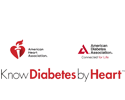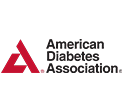Taking the Digital Leap Saves Community $20+ Million in Preventable Health Care Costs
Hospitalizations dropped by almost 3,000 people over a two-year period in Cuyahoga County, Ohio, thanks to a variety of quality changes and investments in electronic health records (EHR). This tool collects and shares critical health information about individual patients and populations across health care settings.
The nearly 11 percent drop in hospitalizations for common cardiovascular conditions (diabetes, high blood pressure, heart failure and angina) was reported in the 10th Community Health Checkup by Better Health Greater Cleveland, a regional health improvement collaborative that works with health care systems, health plans and employers to foster quality health care that’s more affordable.
Why does this decline matter? Because it shows that through efficient use of EHR, primary care is getting better in this community and has implications for advancing the quality of patient-centered care across health systems.
The report demonstrates that practices leveraging EHR are finding that they can more effectively measure care and identify opportunities to enhance service as a result: “The changes are helping people change the course of their health, and they’re adding up to measurable impact on the community – in health, care and cost.”
Better Health also notes that EHR makes a huge impact for the better when it comes to health outcomes for patients: “We have documented large differences between our EHR- and paper-based systems in terms of achievement and improvement of our standards in diabetes and high blood pressure.”
Indeed, a 2011 paper published in the New England Journal of Medicine confirms this trend, finding a 35 percent higher achievement for composite care standards for diabetes patients treated by practices using EHR compared with practices using paper-based systems. EHR sites were also associated with a 10 percent greater improvement of care and a 4 percent improvement among outcomes.
“EHRs have been well shown to improve patient safety, especially through e-prescriptions and clinical decision support,” says Dr. Tim Kowalski, President, Health Action Council Quality Forum. “They also help to improve care coordination via medication reconciliation, enhancing the exchange of health information and through the use of patient registries. And, they help to reduce redundancy via awareness of previous evaluations and various test results.”
Dr. Kowalski adds: “As health care purchasers we are demanding that health care providers demonstrate quality improvement, customer experience improvement and cost-effective care when we consider which provider groups to feature to our employees and their dependents. As we move from a world of fee for service payment to population health outcome-based compensation, this will become increasingly important.”
Have you seen examples – beyond those demonstrated by Better Health – where care is improved and costs are reduced when EHR are incorporated in the system? Tell us more.


















